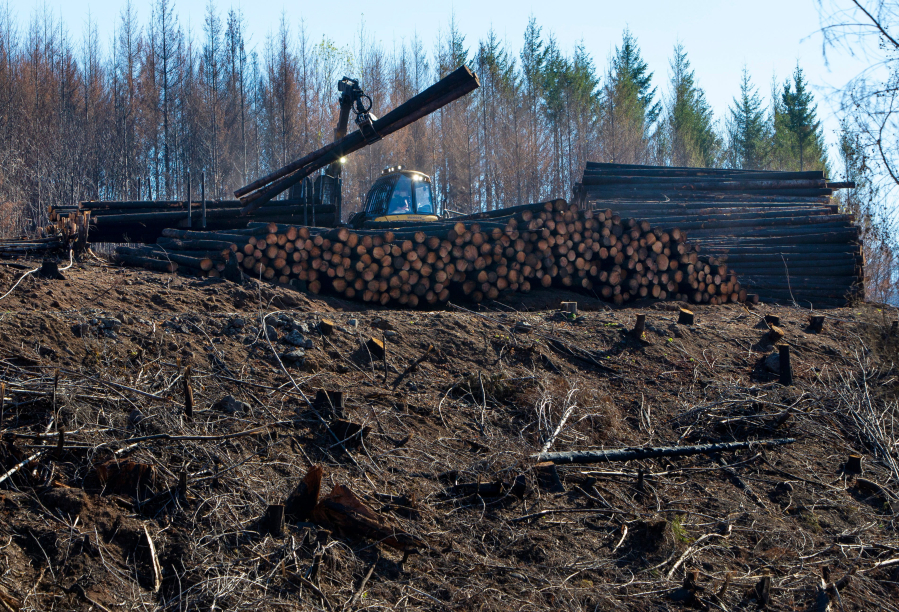As the hazardous tree-removal program overseen by the Oregon Department of Transportation goes into high gear after last fall’s devastating wildfires, many of Oregon’s most scenic and beloved areas are being transformed into post-apocalyptic stretches of roadside clearcuts, gargantuan log piles and slash.
“A person really has to come and look at it to get a sense,” said Ron Carmickle, mayor of Gates, which was ravaged in the Labor Day fires that raged through the Santiam Canyon and is now seeing heavy post-fire cutting on both public and private property.
“The scale of it … “ he said. “It’s absolutely insane. You have to see it.”
State officials estimate there are 142,000 hazard trees along roadways, rivers and on private properties burned in the fires. The tree removal program, being carried out by several contractors monitored by the Florida-based disaster recovery firm CDR Maguire, has already removed some 29,000.



